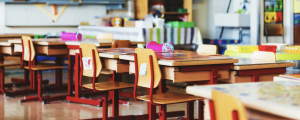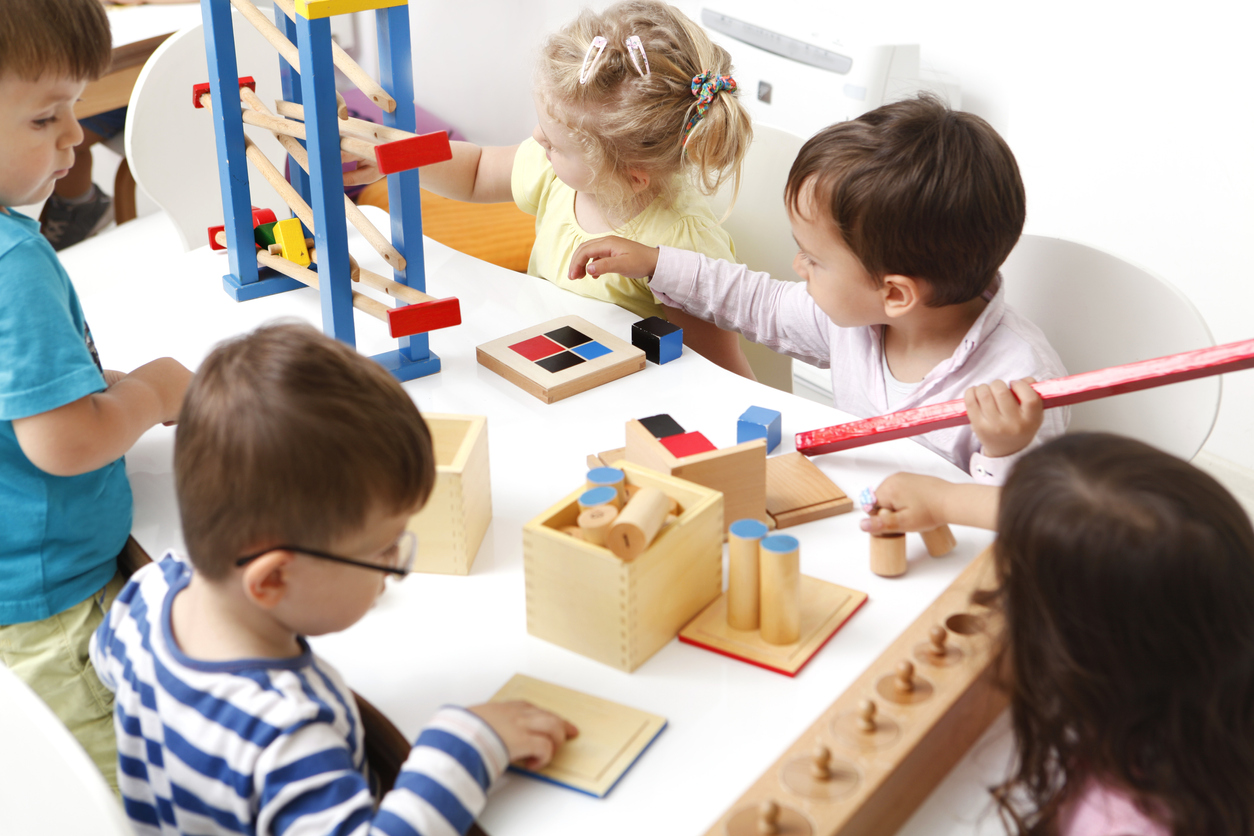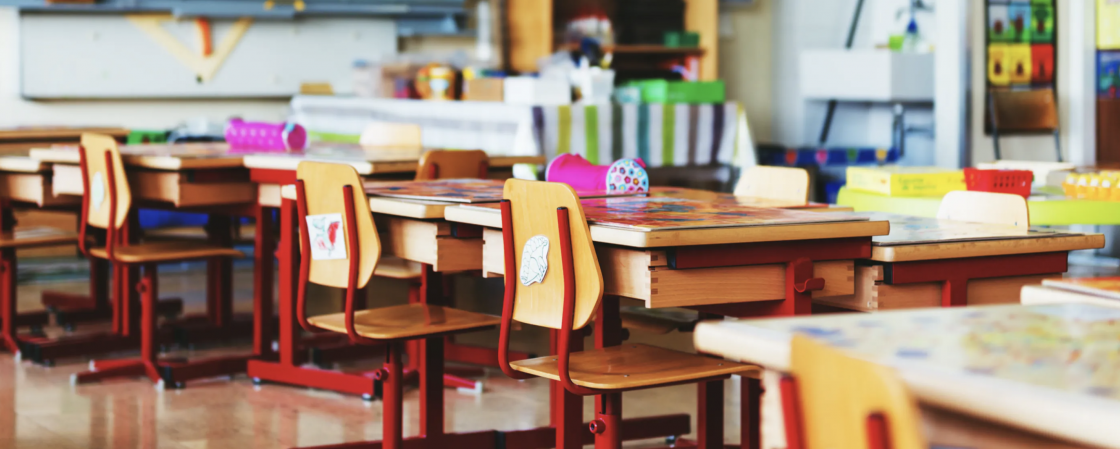
My students are kindergarteners. This means giggles, finger paint, puppets, learning letters, drawing pictures, getting messing, learning to sit, singing songs, playing with sounds, manipulating crayons and pencils and sometimes even some tears which are usually fixed with a hug or a hand on the back.
Their kindergarten isn’t this way. They don’t get to experience the free play in the afternoon, they don’t get the communal bucket of crayons at their table where they just sit and draw pictures with their “very bestest friend”. There are no hugs when they fall off the swing or when they must leave mom on a hard morning. They have been in quarantine at least three times at this point, two without me. This meant they received instruction from someone they didn’t know for up to two weeks or from a parent if they were the only student in quarantine.

Instead they enter a building that where they sit with the same kids for weeks on end, until there is an extended break, to ensure there is always some degree of separation between them and their classmates. They can only play with the same items for a week at a time, with the same kids they sit with.
Yes, most of the students weren’t in school during the school closures, but they still feel the impacts. Many have older siblings and these younger students were often pushed to the back while parent focused on trying to help the older child stay focused and successful in their studies. If not that then, the family was just trying to survive. Many of them were not a priority. They know too much about sickness, masks, cleaning, germs, quarantine, isolation, testing and in some cases death. Yet they are resilient.
Many students entering school this year came in with little to no skills. It wasn’t limited to just one area; it was in all areas. I don’t know how much the pandemic played into this, because the children I work with come from challenging situations, even in the best of circumstances. It is not unusual to have students who have never been exposed to letters, their sounds, or who have never been read to. What was unusual was the number of students. Even the few who attended preschool were lower performing than the typical student from that teacher. Few could recognize their name and even fewer could write it. Only a handful even knew what a letter or number was.
Over the school year I have noticed that my students are almost a half year behind where my students typically are. They still struggle to read the basic words that we have worked on since the first days, they write the least amount possible, and they struggle to make sense of the materials we read. There appears to be a lack of motivation and an inability to connect or extend their ideas. I have spoken to the other two kindergarten teachers and they are seeing the same thing in their rooms. It isn’t that they don’t want to learn, they are excited every time they finally meet a new goal. This perceived lack of motivation must be something else.
Where are we coming from and where do we go?
We haven’t changed our methods of teaching much. We recently adopted a direct instruction approach to phonemic awareness that the kids get excited to do, but other than that we teach sight word through presenting them, and practicing them. Our writing instruction ties into our reading curriculum and parts of it are useful, but every day they are doing something different. The students seldom create anything that lets them be themselves. It focuses on skills only and always ties into what we are reading. For example, at this point it would be writing an opinion about the story we read this week. Our “creative writing” is basic writing prompts tying in the sight words as much as possible. There is little room for creative thinking and excitement.
What has changed is that we must be ready at a moment’s notice to switch from in person learning to at home learning. We are expected to teach the same lesson via Zoom, and have them complete activities computer using google classroom. Thankfully they like the direct instruction and willingly do that by Zoom. We need to find a method that is more engaging since we don’t know what the future looks like and how long the back and forth between school and home will continue.
Over the few years I have been teaching kindergarten I have noticed that the best stories come out when the children are playing. It can be when they are building with Legos or playing pretend in the kitchen. It is through play that children process the world and make understandings of what they experience. Their understanding of emotions and reactions of “characters” is much deeper in play than it is when being asked during a read aloud. They also can come up with detailed and creative stories about families, animals and experiences that they cannot articulate when they are asked to sit down and write.

Like many students, my students are drawn to technology. They get excited to use it and with some practice become independent quickly. Within a couple a of weeks, I typically have several that can log in by themselves and can help their classmates. They like showing what they can do.
I envision bringing these two components together to help students expand their understanding and to help them find new ways to express themselves through storytelling. Allowing students, the opportunity to play and recreate their world through play will allow them to develop knowledge and understanding of what they are seeing and experiencing. It also provides the opportunity for them to interact with each other to learn about the social elements of life as well. As they interact, they learn new ideas from their peers and their understanding deepens and expands.
Technology fit in to this by providing another form of expression for the students. Instead of expecting them to sit and write why not allow students to record their stories. This is inherent for most children. They love to tell a good story. It is much easy to record it then to write it. They would be able to listen to it and explain it to someone, add details to it. It would even be possible to use images and narrate it to create a final product.
By channeling all the characteristics of children together into a resource that allows them to be creative and express themselves they will be more engaged and motivated. This is also something that can transfer between home and school. Children have things at home to create and play. They have the ability to take their devices home, so they can still record and use the camera. Using projects and play will not only be more engaging it is a way to keep learning moving forward when there is uncertainty in the learning environment.
resources:
Arnove, Robert F. Imagining what education can be post‑COVID‑19. 2June2020. DOI: https://doi.org/10.1007/s11125-020-09474-1
Heath, S.B. (2013). The Hand of Play in Literacy Learning. International Handbook of Research on Children’s Literacy,Learning, and Culture .[electronic resource].(pp. 184-198). Wiley- Blackwell.
Resnick, Mitchel. Lifelong Kindergarten: Cultivating Creativity through Projects, Passion, Peers, and Play. Excerpt from Chapter 1: Creative Learning. https://en.unesco.org/sites/default/files/education_in_a_post-covid_world-nine_ideas_for_public_action.pdf

I love the way you talk about building with Legos…I use that same imagery with students when they try to write stories and tell them they are building with their words. It helps them conceptualize the need for rewriting and revision. I really, REALLY miss this level of playfulness that is not very evident in classrooms this year.
“Could they?” Creative ideas to consider:
Could they create a backdrop? Wear costumes? Record the story during play with multiple students? I wasn’t sure if the intention was to have them play first to develop the story and then tell it, or if it was to record their story development as the play is occurring.
Could this be something that is shown to the parents in a final, end of year celebration? Or posted on a school or PTSA Facebook page? Or school/district website?
Could you do a recording where a student records and starts the story, and the next has to listen and build on the story in their recording, and the next listens and builds more? Maybe something in small groups so that it wraps around and each person in the group gets to video contribute multiple times. Then have a “watch party” so the other students can see the stories and discuss them. (As I was writing, I just got really excited about doing this with my kids at the beginning of next year when we are covering narrative:) We have access to Seesaw and Flipgrid, which can make something like this possible).
I could see my students getting very, very excited about a project like this. I also think it would help make up for lost oral language development that no longer occurs with social distancing.
I think that there is a lot of possibilities with this, as your post indicated. I can see them creating scenes with legos and writing stories about them, retelling a story as they remember it, or maybe collaborating together to tell a story from a different character’s point of view which they could create the scenery…and record it. I haven’t fully solidified the vision, it is still a concept in my mind. Maybe it won’t ever be a fully formed idea and it will have to evolve as it transpires. I think in this situation there is some value in being flexible, but having an idea of what you like to see, and work with it while it is being planned. For example knowing how play will be involved in that week’s (or 2weeks’) plan and how to fit it together. Then adjusting for the next unit of play’s objective. So how I address creating a story from Legos may be different than how I would go about planning for storytelling through make believe play.
Hopefully that made sense.
This thread has me thinking about Vivian Gussin Paley (Boy Who Would Be a Helicopter) and her storytelling practices with her younger students. I can’t remember how much of this was in the chapter we read together, but she does story circles where one kid gets to direct others in helping tell a story — so the kid will assign his classmates characters and then he will narrate while they act out the story. This chance to see their stories comes to life seems to be very powerful for her students. Another model to think about! Or perhaps just one of many storytelling forms that you could scaffold into a practice with your students?
I also really appreciate Deni’s suggestions about how you might share this. As you are noticing declining opportunities for play, this could be a chance to advocate for its importance. Storytelling here is standing in for play — which makes sense, based on lots of what we’ve read this semester. As you take a playful approach to designing this for your kids, you might just keep an eye on who else might need to see this …
I need to clarify…I use the idea about building with Legos as a metaphor for how they build stories with words. They put words in, move them around, take some out, put others in, etc. …until they have the story they were trying to tell.
I really felt when you said “Yes, most of the students weren’t in school during the school closures, but they still feel the impacts. Many have older siblings and these younger students were often pushed to the back while parent focused on trying to help the older child stay focused and successful in their studies.” I teach the opposite spectrum which is 11-12 graders and they often have younger siblings that they are in charge of during this Pandemic. I also think that the point that you bring up how far behind your students are currently is a truly scary statistic that leads to where we go in the future? I think that it’s something that all educational systems are going to have to try and figure out because there are also deficiencies in the older group of students too. However, I would think that the foundational pieces of the age range you are teaching would be more drastic as my students arguable should have those pieces in place. Though, their progress in ELA would I think be easier to manage then say math or science. I like that you’re thinking about projects that could be transferred between work or school too. One question would be is how easy would it be for the parents to help support when at home?
I think that with my demographic it is very challenging for many families to support their students. They have so many stressors that the little ones often are left to older siblings or looked at as having time to catch up, as one parent explicitly told me.
There are a few things parents can do that aren’t hard. Reading to their children each nigh, even 5 minutes, practicing letter names and sounds, counting to 100. These can be done at random moments. Pointing out letters on signs, in books, or traditional flashcards. Counting can be done anywhere, and counting out objects can happen when children help with just about anything. While learning sight words is fantastic, I feel the others are more important, Reading to, and with children has proven to aid in language development and I will take that over learning words out of context. I don’t expect parents to do everything. I will take the basic skills, over nothing.
I also came away from this thinking about what might be done at home to help bridge home and school for your kids. Could there be a requirement that at least one character come from home? A stuffie or other special something? How else could you encourage your kids to share some of their storytelling at home?